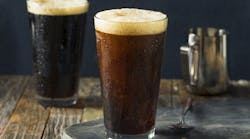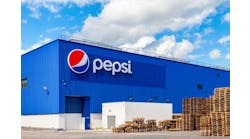Coffee and tea are comfortable, familiar flavors for consumers. It’s no surprise then that those two ingredients – in hundreds of different forms – find their way into foods and beverages across a wide spectrum.
But coffee and tea extracts provide more than just flavor. They offer a punch of energy, dozens of potential nutritional benefits and in some applications even color and texture. These ingredients have centuries of history in food & beverage applications, but commercial food processors are still finding fresh uses.
Coffee: Fortified brew
Naturally, coffee extracts are most at home in beverages. Despite the fact that people have been drinking coffee itself for millennia, commercial beverage manufacturers continue to find new ways to enhance the product or incorporate its flavor and other characteristics into beverages.
“Coffee beverages fortified to deliver nutritional claims are a growing category,” notes Philip Caputo, marketing and consumer insights manager of ingredient supplier Virginia Dare, whose coffee extract portfolio includes light, medium, dark and espresso roast products in liquid and dry powder form.
“Fortified coffee beverages add nutrients like protein or herbal ingredients – such as guarana or ginseng – traditionally associated with energy brands,” he says.
Brian Zapp, director of marketing at Applied Food Sciences, which specializes in coffee extracts, also observed the health trends in beverages based on coffee extracts. In fact, Applied Food Sciences originated as a company that researched the use of chlorogenic acids derived from coffee in cancer-fighting applications, Zapp says.
“Chlorogenic acid is the primary antioxidant active in coffee,” Zapp explains. “It’s one of the most bioactive antioxidants available for people. We’ve done a lot of research on coffee, and we know the roasting process destroys a lot of chlorogenic acid value. With the extract you’re able to preserve that property.”
Java.g is a green coffee caffeine extract from Applied Food Sciences that is standardized for chlorogenic acid and naturally occurring caffeine. It is used in natural energy drinks and nutraceuticals.
Of course, most coffee extracts for beverages are used for straight-up coffee flavor and caffeine content, not nutritional benefits.
For example, Pure Coffee Extract from ingredient supplier Nielsen-Massey finds its way into lattes, mocha drinks, milkshakes and even beer. Nielsen-Massey’s product, which contains just water, alcohol and coffee extract, also can enhance a beverage’s clean-label claims, since it’s Non-GMO Project verified.
S&D Coffee & Tea is seeing more shelf-stable nitro-infused cold brew coffees, including those prepared with a variety of plant-based milks and many blended with functional ingredients like proteins, spices, botanicals and adaptogens. Photo: S&D Coffee & Tea
S&D Coffee & Tea has observed even more unusual uses of its extracts, which are custom-formulated to meet processors’ specifications.
“Coffee concentrates and extracts are being used to create a huge variety of RTD beverages — from super-healthy offerings to those spiked with alcohol,” notes Helen Griffith, vice president of marketing for S&D Coffee & Tea.
“We’re seeing more and more shelf-stable nitro-infused cold brew coffees, those prepared with a variety of plant-based milks and many blended with functional ingredients like proteins, spices, botanicals and adaptogens. For example, the addition of carbonation for a sparkling beverage or spiked with alcohol or CBD for a functional twist,” she says.
“Nitro” is a relatively new term with two definitions. In some uses, it simply means coffee made with a higher ratio of coffee grounds to water than regular coffee, increasing both its coffee flavor and caffeine content. But it’s also applied to coffee that’s been injected with nitrogen, resulting in a foamy “head.”
A particularly innovative coffee-based ingredient is CoffeeNectar from Applied Food Sciences. This powder is derived from the coffee “cherry,” the fruit that surrounds the bean when it is picked, Zapp explains. The cherry is normally removed and disposed of as waste, but Applied Food Sciences has developed uses for it.
“The cherry has sugar content and has a nice flavor to it, an earthy tea-like flavor,” Zapp says. “It also contains some phytonutrients and polyphenols. The coffee-growing communities are laboring to pick every bean by hand, and all that cherry is being wasted. So if we can get people on board with the idea that this is another healthy, novel flavor from coffee, it brings a ton of value back to these people.”
Zapp says CoffeeNectar is primarily being used as a sweetener for beverages, including coffee beverages. “That’s kind of cool,” he notes, “sweetening coffee with coffee.”
Cold brew coffee, which involves a slower brewing process that results in a smoother flavor, also has become the basis for trending beverages.
“Right now, cold brew coffee is a popular request,” says Griffith. “The appeal of cold brew is the slow brewing process which reduces the extraction of bitter compounds and in turn, produces a smoother, brighter flavor profile. It also serves as a great foundation for beverage manufacturers to get creative with the layering of flavors and on-trend ingredients. From botanicals, collagen and adaptogens to the addition of different flavors and milks, the packaged cold brew trend is just getting started.”
Virginia Dare offers a line of cold brew products that includes liquid and dry concentrates, extracts and customizable cold brew flavor systems. Applications for the company’s cold brew products range from RTD iced coffee to alcohol-based drinks.
Virginia Dare offers a line of cold brew products that includes liquid and dry concentrates, extracts and customizable cold brew flavor systems. Photo: Virginia Dare
“Cold brew continues to be a particularly exciting trend within the coffee space – especially varieties with complementary flavor pairings such as RTD nitro oat milk lattes or carbonated cold brew,” Caputo says. “Cold brew is boldly complex and refreshingly smooth, which is why it piques consumers’ curiosity and loyalty.”
Coffee in food
Coffee extracts also are widely used in processed food applications. In fact, in the 2020 Taste Charts created by ingredient producer Kerry, coffee flavors appear six times, including three mentions in the “Emerging Sweet” category. That category refers to products such as candy, baked sweets and cereal. The three coffee flavors mentioned are Mocha Coffee, Cold Brew Coffee and Vietnamese Coffee.
Coffee flour, which can be made from par-roasted coffee beans or the coffee cherry, is finding applications in baked goods, frozen desserts and even ketchup.
According to The Coffee Cherry Co., which manufactures coffee flour from the cherry for retail and wholesale applications, the flour contributes a natural brown color and enhances a product’s chocolate and spice flavors. It also helps with moisture retention and adds fiber, potassium, antioxidants and iron.
A new powder product from Applied Food Sciences called CoffeeProtein is being used in a number of food products now in development, ranging from energy bars to meat analogues, Zapp says.
CoffeeProtein, which contains 30 percent protein, is made from green coffee beans in a process similar to extraction, but with different time, pressure and temperature settings.
“CoffeeProtein has an amazing flavor and sensory profile,” Zapp says. “While a lot of plant-based protein is gritty and bitter, coffee is creamy and has a flavor profile similar to nut protein. And because it’s made of coffee, it hits on that important hot button for consumers: familiarity.”
Tea is hot, too
Coffee’s less caffeinated cousin, tea, also has broad applications in food and beverage processing.
For example, Virginia Dare’s line of foundational tea extracts and concentrates is used in a wide range of RTD beverages. The line draws from an extensive library of true tea flavors and herbal tea flavors, ranging from Jasmine Tea to Orange Blossom to Yerba Mate.
“A lot of new growth in the tea realm is attributed to consumers wanting a more premium tea,” Caputo explains. “Things like single origin RTD beverages and unsweetened artisanal/herbal teas are in high demand, as opposed to the traditional sugar sweetened, fruit flavored iced teas where the tea impact was slighter/less relevant. Now consumers want to be able to taste the different tea flavors and distinguish the differences between the premium beverages.”
Tea ingredients also are popular because of potential health benefits. Tea contains plant compounds called polyphenols – specifically the polyphenols catechin and theaflavin – that have shown potential anti-cancer properties.
Taiyo International touts the health benefits of the tea ingredient formulations in its Sunphenon series, which includes the Teavigo brand. The products “have been shown to have numerous physiological benefits, including antioxidant, anti-microbial, deodorant and thermogenic activities,” according to the company’s website.
“Tea extract also is being used as a weight loss ingredient,” notes Suzannah Gerber, executive director of food consulting firm Haven Foods, though she cautions that the potential health benefits of tea extracts might be offset by potential risks. “Not enough information is supplied about the extracts in food ingredients to always know which compounds have been isolated.”
If you extend the definition of tea beyond the normal tea plant (Camellia sinensis), the applications grow. For example, guayusa, a member of the holly plant family that is used to make a tea-like beverage in South America, is being used in some commercial food applications.
“Guayusa has a chemical structure that’s similar to green tea in the way the caffeine is brought forward, but it also contains chlorogenic acid,” Zapp notes. Guayusa has been used for millennia by native hunters who needed to stay awake during hunts, but wanted to be able to sit perfectly still, Zapp says. Guayusa is the perfect herb for that, because its chemical make-up provides the “buzz” of caffeine without the jittery side effects.
Amatea is a guayusa extract from Applied Food Sciences. Zapp says the company is testing the ingredient’s effects on “video gamers,” who want the energy boost without the jitters.
“There are 20 or so products using Amatea now,” Zapp says. “They’re mostly beverages, including a couple of sports nutrition products.”
Tea in food processing
Tea products have commercial applications beyond beverages. Tea extracts can be found in baked goods and ice cream, for example.
Apex Flavors Inc. offers several varieties of green and black tea extracts that are used as food flavors. “While subtle, the flavor of green tea is very trendy and in demand for a wide range of baking and other food and beverage applications,” the company reports on its website.
A number of studies have examined tea polyphenols as functional ingredients in foods, for their preservative and health benefits.
“Catechins are able to inhibit lipid oxidation in red meat, poultry and fish,” a 2008 study called Tea Polyphenols as Nutraceuticals concluded. The report’s authors also found that the effects extended to prepared foods: “The use of green tea extracts in foods such as cereals, cakes, biscuits, dairy products, instant noodles, confectionery, ice cream and fried snacks gives a healthier appeal to consumers, and, hence, the market potential for these foods may be improved by the presence of catechins.”
Ultimately, the appeal of coffee and tea ingredients is linked closely to their familiarity among consumers. Whether they are used for flavor, energy, healthy benefits or as a preservative, consumers are innately comfortable when they read “tea” or “coffee” on an ingredient panel.


